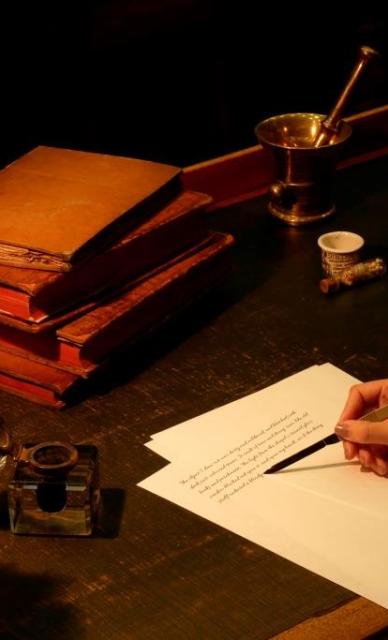Physicians' Gallery Newsletter
Updates on upcoming events, exhibitions and online stories
Empowering medical excellence, shaping healthcare futures.
The RCPE possesses an impressive collection of 72 sculptures, the majority of which are in a neoclassical style and date from the nineteenth century. Most of the pieces appear to have come into the collection following the College’s move to its current premises on Queen Street in 1846. During the late eighteenth and early nineteenth century there was a particular fashion for owning pieces of neoclassical sculpture. Sculptors including Antonio Canova (1757-1822) were particularly famous, whilst companies such as Brucciani & Co. produced and sold casts of classical sculptures on the mass market. The popularity of the neoclassical style arguably played a role in the College’s decision to spend the considerable sum of £408 on 24 classicised statues for the Great Hall in 1865. The College’s preference for neoclassical works continued throughout the nineteenth century, for instance in 1868 the College approved the expenditure of £100 on a classicising bust of John Graham MacDonald Burt.
However, the College was not responsible for the purchase of the entire collection, indeed many of the pieces were donated by Fellows, or the families of deceased Fellows. For instance, the College Minutes of 3 May 1868 record that the bust of Dr Poole, who was then 86 years old and ‘very frail’, was donated to the RCPE by his daughter. The donated busts are also in a predominantly neoclassical style, again reflecting the contemporary preference for this sculptural genre.
All bar two of the portrait busts depict significant figures in medical history, for instance the busts of William Harvey, Galen and Hippocrates can be seen in the College. However, the majority of the busts depict significant figures in Scottish medical history, many of whom had an association with the College. For instance, the collection includes a bust of Sir James Young Simpson who made significant contributions to the field of obstetrics and who was also President of the RCPE in the period 1850-1852.
All of these pieces are in a neoclassical or idealising style, and many were made by Scottish sculptors, including William Brodie and Sir John Steell. However, the College also possesses a bust of James George Playfair by the famous American sculptor Hiram Powers. Powers spent much of his career in Florence, and it was here that he gifted this marble bust to Playfair, who had cared for his dying son. Interestingly, a plaster version of this bust is found in the Smithsonian Museum; this may have been Powers’ initial model of the piece before he sculpted the final version in marble.
Only two of the busts in the collection do not depict figures associated with medicine or medical history. The first of these is a bust of an anonymous Roman Lady by John Hutchison, which dates from the nineteenth century. The second of these is a more contemporary piece, depicting HRH Queen Elizabeth, the Queen Mother, which was donated to the College in 2002.
The idealising tendencies of neoclassical sculpture are particularly evident in the statues in the College’s collection. This tendency was inherited from the original classical sculptures, and this heritage is particularly evident in the British Museum’s current exhibition Defining beauty: the body in ancient Greek art. With the exception of the statues of Asklepios and Hippocrates which are found above the main portico, the statues depict female figures. It is evident that the female figure above the main portico is Hygeia, as she is portrayed with her symbols of the snake and cup. However, in contrast to the portrait busts, the majority of the female statues remain anonymous. It has been thought that one of Lazzaroni’s statues in the vestibule as well as the female figures in the Great Hall may represent Hygeia, however the symbols of Hygeia are absent from all of these pieces, thus their identity is far from certain. It seems therefore, that these pieces were selected for their aesthetic impact rather than their symbolic importance.
Overall the RCPE’s sculpture collection provides a fascinating insight into nineteenth century sculpture. Through the portrait busts it is possible to trace some of the most significant figures in Scottish medical history, whilst both the busts and the statues provide a valuable illustration of the neoclassical style.
Author: Mona O’Brien, Volunteer, Royal College of Physicians of Edinburgh.

Updates on upcoming events, exhibitions and online stories